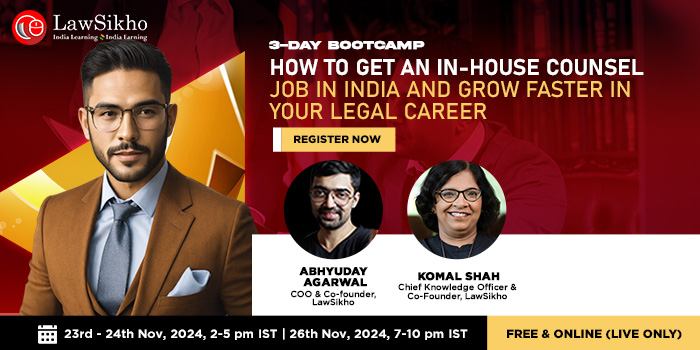This article on the role of preamble in interpreting Article 12 and 13 is written by Satyam Tandon from OP Jindal Global University.
The Preamble to the Indian Constitution is based on the objective resolution of Pt. Jawaharlal Nehru. It was adopted by the Constituent assembly on 22nd January 1947. It doesn’t make any grant of power but gives the constitution direction and purpose.1 It has been formed to declare the fundamental polity which is to be established in the country so that we can secure social, economic and political justice, liberty of thought, equality of status and opportunity, promote fraternity amongst our citizens and unity and integrity of the nation. The Constituent Assembly took a lot of time formulating the preamble so that it could
The Constituent Assembly took a lot of time formulating the preamble so that it could summarize and reflect the essential features and main objectives that the legislation is intended to achieve, so much so that every single word and its arrangement carries a lot of significance and is based on a lot of discussions.
For a lot of time the scope of the preamble has been debated, whether or not it is a part of the constitution and the whole discussion in Keshavnanda Bharti case gives us a gist of this debate. There are many cases that throw light on this topic and we start in a chronological order with the AK Gopalan case where the contention of the preamble being a source to overrule a law in article 21 was 1 Keshavananda Bharati v. State of Kerela, (1973) 4 SCC 225 2 LC Golak Nath v. State of Punjab, 1967 AIR 1643, 1967 SCR (2) 762 rejected.
1 Keshavananda Bharati v. State of Kerela, (1973) 4 SCC 225
2 LC Golak Nath v. State of Punjab, 1967 AIR 1643, 1967 SCR (2) 762 rejected.
Next up was the Berubari case where the preamble was held to be “a key to open the mind of the makers”…nevertheless preamble is not a part of the constitution. In the third case we discuss, the judge was in a dilemma and remarked that the preamble is an epitome of the features of the constitution and whether it is a part of the constitution should be considered, thus a sort of special status was given to the preamble by saying that it was not of the common run such as is to be found in the act of a legislature. It had the stamp of deep deliberation marked by precision.
Finally, in Keshavnanda Bharti, it was held that the preamble was part of the Constitution; that it was not a source of power or a source of limitations or prohibitions and ultimately it had a significant role to play in the interpretation of statutes and constitutional provisions. So much so that it was held in this very case that the very blood and soul of our constitutional scheme is to achieve the objectives of our constitution as contained in the preamble which is part of the Constitution. Also, in this very case, a basic structure doctrine was established which basically stated that there are inherent limitations on the amending power of the Parliament and Article 368 does not confer power so as to destroy the Basic Structure of the Constitution. Now that the preamble was considered an essential part of the constitution, it was held in the Bommai case that, the preamble indicated the basic structure of the constitution and that it could be relied upon to strike down any law in terms of constitutionality if the said law violated any basic features as summarized in the preamble.
The preamble had suddenly become relevant and became a document that one could rely upon for dismissing a law that violated it (which certainly meant increased importance on the preamble).
3 AK Gopalan v. State of Madras, 1950 AIR 27, 1950 SCR 88
4 Berubari Union v. Unknown AIR 1960 SC 845, 1960 3 SCR 250
5 Sajjan Singh v. Rajasthan 1965 AIR 845, 1965 SCR (1) 933
6 The case that saved Indian Democracy, The Hindu, 23 April 2013
7 Sr Bommai v. Union of India AIR 1994 SC 1918
On the face of it, this seems a very good statement as people have more than just the constitution to rely on when a right of theirs is infringed. But, this becomes problematic when we apply this to Article 13(2), which says that the state cannot make a law which takes away or abridges the rights conferred by Part 3. Part 3 being the fundamental rights given to each and every citizen of our country. So, using the preamble to declare a law void when Article 13 is already subject to test of fundamental rights inherently means that the bigger set, fundamental rights has something missing in it that comes under the preamble, which is why we are including it. Now, this becomes problematic as having more and more of these dynamic and subjective ideas and then making the whole Preamble as a source for dismissing a law becomes very tedious because more ideas lead to more interpretation and that is always incomplete because of the unclear scope of the same.
For example, socialism. It was added to the preamble by the 42nd Amendment Act, 1976. Although the preamble already embodied the socialist aspect, this made it a bit excessive as socialism implied control of the state over means of production. So, the intended effect was democratic socialism and the actual effect could be democratic or communistic socialism.
As held in DS Nakara v. Union of India, the basic framework of socialism is to provide a decent standard of life to the working class. This amongst others on economic side envisaged economic equality and equitable distribution of income. So, the principle aim of a socialist State, was to eliminate inequality in income, status and standard of life, ending poverty, ignorance, disease and inequality of opportunity.8 Furthermore, in Excel Wear v. Union of India, it was held that
8 DS Nakara & Others v. Union of India 1983 AIR 130, 1983 SCR (2) 165,
including the word socialist in the preamble might enable courts to lean more on favour of nationalization and state ownership of an industry but so long as private ownership is recognized and governs an overwhelmingly large proportion of our economic structure, the principles of socialism and social justice cannot be pushed to such an extent to ignore completely or to a very large extent, the interest of another section of public.9 In the Akadasi Padhan v. State of Orrisa it was said, one approach is a matter of principle and its justification being social welfare while the second is of state ownership being a matter of expediency dominated by economic efficiency, a rational and pragmatic approach. The first is on the ground that all national wealth and means of producing it should come under national control, whilst the second supports nationalisation only on grounds of efficiency and increased output. 10 This case is of the year 1962 and after Indira Gandhi liberalized the economy in 1980, India has moved away from the idea of socialism long ago and anyone calling India a socialist State knows it to be false.11 The second example we take is of secularism. In Xavier’s College v. State of Gujarat it was held that “There is no mysticism in the secular character of the state. Secularism is neither anti-God, nor pro-God; it treats alike the devout, the agnostic and the atheist. It eliminates God from the matters of the state and ensures that no one shall be discriminated against on the ground of religion. The Constitution at the same time expressly guarantees freedom of conscience and the right freely to profess, practice and propagate religion.”12 The question here that we must ask is whether on expulsion of this word India would become a communal country? Doesn’t Article 25 already protect this right? Before answering these questions, another case that comes up is SP Mittal v. Union Of India, where it was held here that religion and religious denomination have not
9 Excelwear v. union of India 1979 AIR 25, 1979 SCR (1) 1009
10 Akadasi Padhan v. State of Orrisa 1963 AIR 1047, 1963 SCR Supl. (2) 691
11 Person, and Salil Tripathi, “Why Secularism and socialism are integral to the Indian Constitution.”
12 The Ahmedabad St. Xaviers College v. State of Gujarat 1974 AIR 1389, 1975 SCR (1) 173
been defined but the Preamble promises to secure to its citizens, “liberty of thought, expression, belief, faith and worship. The freedom of conscience and the right to profess, propagate and practise religion, flow out of the idea so expressed in the Preamble.”13 Now, in essence, this was taken as the definition for the word, “religion” and as the importance of the preamble is growing, if such definitions are taken directly from it, like in this case once again we would subject the cases in question to an unreasonably high standard of secularism when under the purview of any sort of a violation. For example, if a practice that is against public order, health and morality is an essential religious practice for the said religion then they can continue to practise it even though it is against the said tests. But, that very practice can be declared illegal and thus stopped if it fails the essential religious practise test. This test under Article 25 becomes satisfactory in deciding how to judge a religious practice but when the same is questioned under the principle of secularism of preamble, it becomes tough because secularism for a test becomes too big a set as it doesn’t talk about any sort of morality, public order or health as sub-tests, it just talks about the right to practise a religion. In this way practices like Sati could be declared legal and the results would be catastrophic.
Both these words were introduced in the 42nd Amendment of the Constitution of India, and the reason for the insertion was pure political vendetta. The word “Secular” was to validate the action of sending communal leaders to prison and banning their organizations and the word “Socialist” was simply to justify banning and jailing Leftist leaders.14 And this is proof of the link between law and politics. With these words added, although they can be removed, no party would ever dare to do so because removing secularism would take away all the
13 SP Mittal Etc. v. Union Of India and others, 1983 AIR,1 1983 SCR (1) 729
14 Person, and Livemint, “The Spurious Debate on the Preamble.”
support the said party would have in any State leading to riots on the basis of religion. Same would be in the case of expulsion of socialism.
Once the Preamble is in the Constitution, it becomes amendable and having more ideas in the Preamble simply creates more scope for interpretation and mess. We have already experienced the same with the Indira Gandhi and now that the words which in essence don’t form part of the thinking of makers of the Constitution, we shall never be able to remove them because of the chilling effect that they have caused. Moreover, every idea in the Preamble is dynamic and changes with respect to time and place. When the meaning, scope and nature of any principle is not properly defined it is very difficult for the courts to adjudicate on these unjustified and undefined principles. As discussed in the numerous examples above, the meaning of socialism and secularism has constantly been changing and such amendment powers have been used wrongly in the past but cannot be mended because of the chilling effect, so by incorporating the Preamble in terms of it being a backing or a test for any violation we enhance the scope of what one can rely on to claim a violation of his rights by any law to a bigger and larger set than the already broad category of fundamental rights. The Preamble should always be seen as a goal, an objective, it should be viewed in totality as the soul of the Constitution but not as something to back upon because of the inherent interpretational potential existent in every value, idea and principles it embodies. Thus Article 13 should be confined to fundamentals rights of Part 3 and not the Preamble per say.















nice. good job.